Extensive Sampling Programme
The Hong Kong Observatory collects samples of all major environmental media, be it from the air (airborne particulates, gaseous iodine, water vapour, total deposition and soil, etc.), or the food chain (meat, vegetables and fruit, etc.), or drinking water, or the sea (seafood, seawater, inter-tidal sediment, etc.). These samples are then measured for their radioactivity in the Radiation Laboratory at King's Park.
Airborne Particulate
A high volume air sampler is used to collect samples of airborne particulates. A pump draws air through a filter paper onto which airborne particulates are deposited. The amount of air passing through the filter paper is determined using the air flow-rate and the period of time the air sampler is activated. Measurements of the radioactivity of these samples are carried out at the Radiation Laboratory at King's Park.
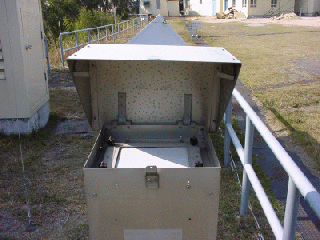
High Volume Air Sampler (HVAS)
Gaseous Iodine
Gaseous iodine is sampled using a radioiodine sampler with a silver impregnated zeolite cartridge, which absorbs iodine efficiently. Air is drawn through the cartridge by means of a pumping system. The amount of air passing through the cartridge is calculated using the flow-rate and the period of time the sampler has been activated. Measurements of the radioactivity of these samples are carried out at the Radiation Laboratory at King's Park.
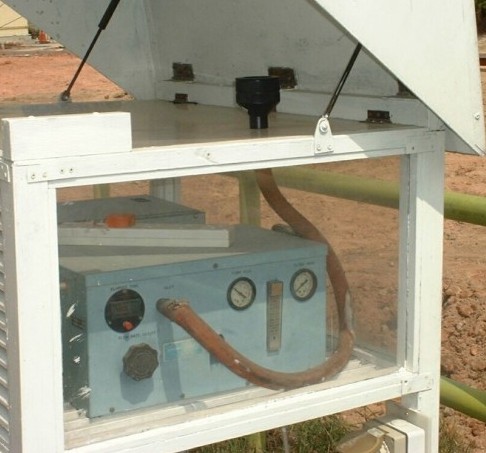
Radio-iodine Sampler
Water Vapour
Water vapour is sampled using a gaseous effluent sampler with a drierite cartridge containing calcium sulphate which absorbs water vapour. Air is drawn through the cartridge by means of a pumping system. The amount of air passing through the cartridge is calculated using the flow-rate and the period of time the sampler has been activated. Measurements of the radioactivity of these samples are carried out at the Radiation Laboratory at King's Park.
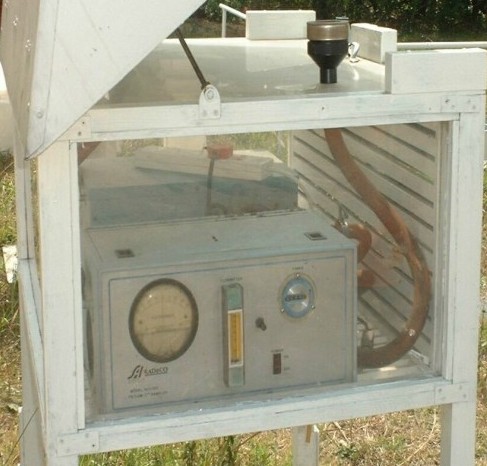
Gaseous effluent sampler
Total Deposition
The total deposition collector is used for collecting airborne materials that are either deposited onto the ground or washed down by rain water. It consists of a 20-litre plastic bottle and a plastic funnel. While wet deposition is collected together with rainwater, dry deposition is collected by rinsing the inner surface of the funnel with distilled water. Measurements of the radioactivity of these samples are carried out at the Radiation Laboratory at King's Park.
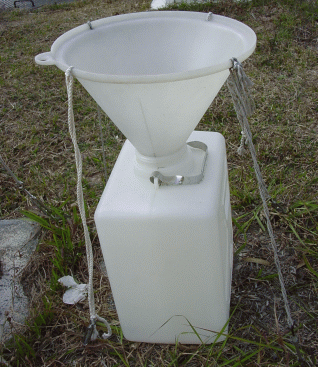
Total deposition collector
Land Soil
A land soil sampling plan has been set up to monitor the long-term variation in the concentration of artificial radionuclides in soil. Sampling from the 39 designated sites throughout the territory is spread over a cycle of six years. At each site, samples are collected from two layers, the upper layer from the surface to 15 cm deep and the lower layer from 15 to 30 cm deep. Measurements of the radioactivity of these samples are carried out at the Radiation Laboratory at King's Park.
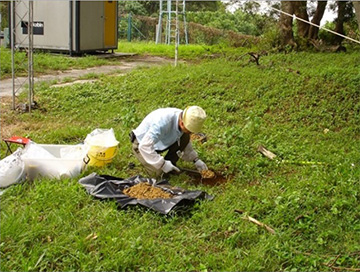
Land soil sampling
Meat
Samples of meat of the major types of livestock typical of the local diet are collected at main distribution points and wholesales markets. Particular attention is given to those produced locally and in Shenzhen. The sampling frequency is once every three months. Measurements of the radioactivity of these samples are carried out at the Radiation Laboratory at King's Park.
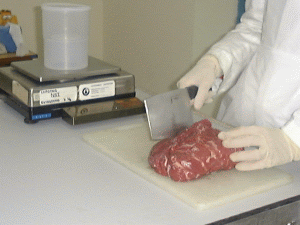
Meat sampling
Vegetables and Fruit
Samples of various types of vegetables and fruit typical of the local diet are collected at main distribution points and wholesales markets. Particular attention is given to those produced locally and in Shenzhen. For vegetables and fruit available all year round, the sampling frequency is once every three months. Seasonal fruits are collected when in season, usually once or twice a year. Measurements of the radioactivity of these samples are carried out at the Radiation Laboratory at King's Park.
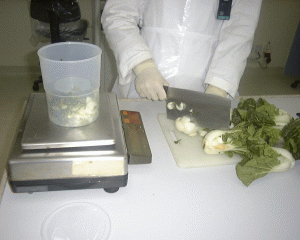
Vegetables and fruit sampling
Drinking Water
Drinking water samples are collected once every three months from the distribution taps at Kowloon and Tuen Mun as well as the treatment works at Sha Tin, Tuen Mun and Yau Kom Tau. Raw drinking water samples are collected from the High Island Reservoir, the Plover Cove Reservoir, the Muk Wu Pumping Station and the treatment works at Sha Tin, Tuen Mun and Yau Kom Tau. Measurements of the radioactivity of these samples are carried out at the Radiation Laboratory at King's Park.
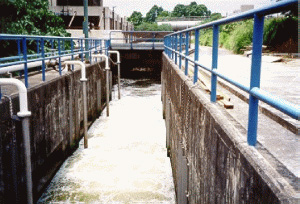
Drinking water sampling
Seafood
Seafood samples include marine fish, shellfish, shrimp, crab, squid and cuttlefish. These samples, originated within Hong Kong waters and in waters west of Hong Kong, are collected either at the wholesale fish markets or from enlisted fishermen at quarterly or half-yearly intervals. Measurements of the radioactivity of these samples are carried out at the Radiation Laboratory at King's Park.
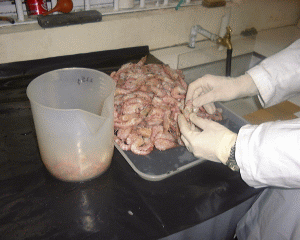
Seafood sampling
Sea Water
Samples of sea water are taken at three depths - the upper level (a few metres underneath the surface), the middle level and the lower level (several metres above the seabed). They are sampled annually at four sampling locations in the eastern part of the coastal waters of Hong Kong. Particulates in the sea water are collected by filtering the sea water samples through a membrane filter. Measurements of the radioactivity of these samples are carried out at the Radiation Laboratory at King's Park.
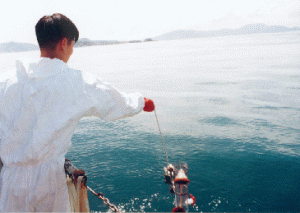
Sea water sampling
Inter-tidal Sediment
Inter-tidal sediments are collected on a quarterly basis at three areas along the coast of Hong Kong, namely Pak Sha Wan, Tsim Bei Tsui and Sha Tau Kok. Two layers are taken at each sampling point, the upper layer from the surface to 15 cm deep and the lower layer from 15 to 30 cm in depth. Measurements of the radioactivity of these samples are carried out at the Radiation Laboratory at King's Park.
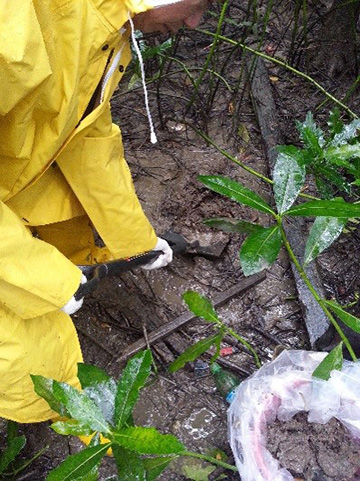
Inter-tidal sediment sampling